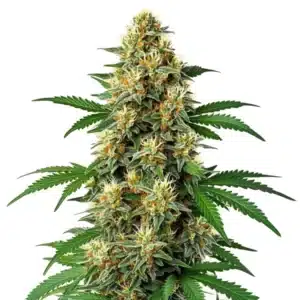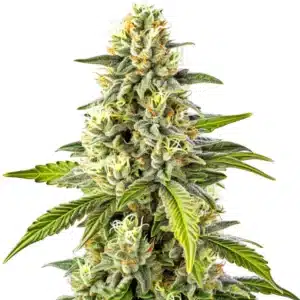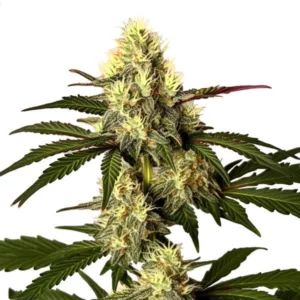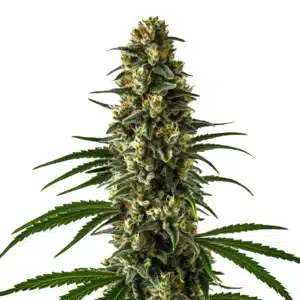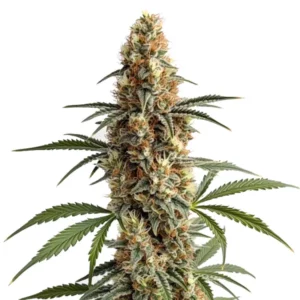
Solving a Plant Mystery: What to Do About Roots Growing in Weird Places
Ever look at your cannabis plant and see… roots? Up where you don’t expect them? Maybe they’re peeking out from the top of your soil, or maybe you’ve seen little white nubs forming on a stem. It’s a strange sight, and it can make any grower scratch their head.
Don’t panic. Your plant is talking to you. You just need to learn its language. Let’s clear this up once and for all, because what you’re seeing is usually one of two things, and the solution is often surprisingly simple.
Recommended Strains
Bruce Banner #3
|
|
THC | 20% - 29% (High) |
|
|
Type | Feminized |
|
|
Yield | Medium |
|
|
Phenotype | 50% Indica / 50% Sativa |
Bruce Banner #3 FBV
|
|
THC | 19% - 23% (Medium) |
|
|
Type | Fast Flowering |
|
|
Yield | Medium |
|
|
Phenotype | 50% Indica / 50% Sativa |
But before we diagnose anything, let’s talk about the single most important thing you can do for your plant’s health: know your water. Before you even start a Grow, you need to measure the pH and EC (the amount of dissolved salts) of your tap water. You can’t fix a problem if you don’t know your starting point. Your target pH for watering should always be dialed in, right around a clean 6.0. This is non-negotiable for a healthy plant.
Alright, now let’s solve this mystery.
Problem #1: You See Roots at the Top of Your Soil
This is the most common scenario. You look in your pot and see a web of roots right on the surface, exposed to the air.
This isn’t your plant trying to escape. It’s usually a sign of one simple thing: soil compaction. Every time you water, the soil settles and compacts just a tiny bit. Over time, the soil level drops, and the top layer of roots gets exposed to the light and air. And as we know, roots HATE light.
The fix is easy. First, gently top up the pot with some fresh soil to cover those exposed roots. Just bring the level back up to where it should be. Second, and this is a pro tip for every Homegrown garden, use a layer of mulch. A good Organic mulch on top of your soil—like pine bark or straw—is a game-changer. It protects that top layer, keeps the light out, retains moisture so you have to water less, and creates the perfect dark, humid environment for your roots to Thrive. It’s a Sustainable practice that makes a huge difference.
Promos & Deals
Problem #2: You See True “Aerial Roots” on the Stem
Now, this is a different beast. Sometimes, especially in super humid environments, you’ll see little white root nubs actually forming on the plant’s stems, far away from the soil.
What’s happening here? Your plant is an opportunist. If the humidity in your tent is crazy high, your plant basically thinks, “Hey, it’s a jungle in here! I can grab a drink right from the air!” It’s trying to absorb moisture directly from its surroundings. While it shows your plant is an adaptable beast (like a resilient Bruce Banner #3 or Blue Dream), it’s usually a sign that your humidity is too high and you need to improve your air circulation to prevent other problems, like mold.

Want to Check Your Roots Without Hurting the Plant?
Curious about what’s happening under the soil? You don’t have to guess. Here’s how you can safely take a peek. If your plant is mature and the soil is mostly dry, gently tip the pot on its side and the entire root ball (the “cepellón”) should slide out in one piece. You can inspect it, see if it’s root-bound, and slide it right back in. If your plant is still small, take a thin stick (like a pen or a chopstick), gently push it into the soil near the stem, and carefully lever the soil up just enough to get a glimpse of the roots without pulling the plant out. It’s a simple way to Educate yourself on your plant’s health. When you Nurture your plants with this level of attention, you Cultivate amazing results.
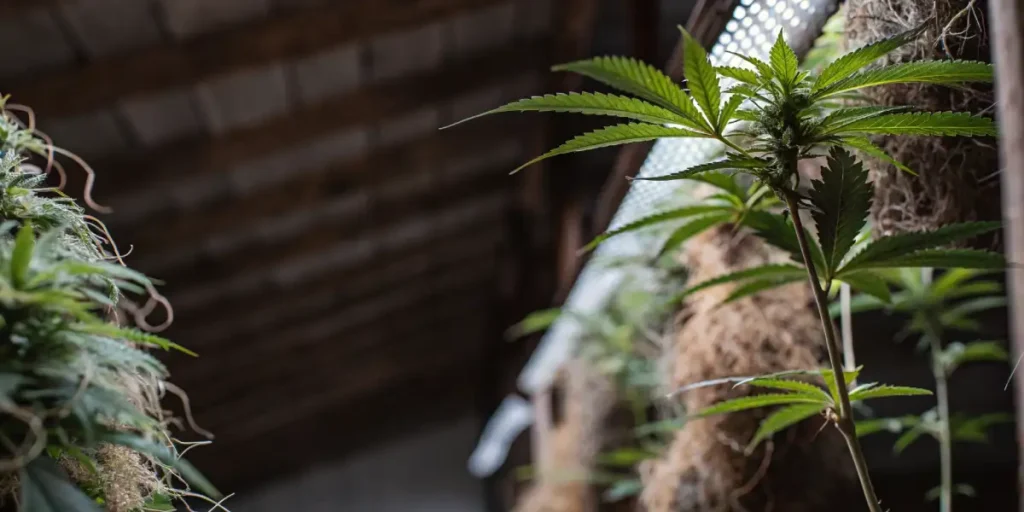
Frequently Asked Questions
What’s the difference between exposed roots and aerial roots?
Exposed roots are part of the main root ball at the top of your soil that have been uncovered due to soil compaction or erosion from watering. True aerial roots are new, tiny roots that actually start to grow out of the plant’s stem or branches, usually in response to very high humidity.
Is it bad if I see roots at the top of my soil?
It’s not a disaster, but it is a sign you need to take action. Exposed roots are vulnerable to light and drying out, which stresses the plant. The fix is simple: top up the pot with more soil and add a protective layer of organic mulch. This will protect them and encourage a healthier, wider root system.
Why is it so important to measure my water’s pH and EC?
Because if your water’s pH is off, your plant can’t absorb the nutrients you’re giving it, no matter how good your soil or fertilizer is. It’s called nutrient lockout. Measuring your water before you start lets you know if you need to adjust it. Starting with a perfect pH of 6.0 and knowing your water’s base EC is the foundation for avoiding dozens of future problems.
How can I check my plant’s roots without hurting it?
If the plant is big and the soil is dry, you can gently slide the whole root ball out of the pot for a quick look. For smaller plants, just use a stick to carefully lever up a small section of soil next to the stem to peek at the root development. The key is to be gentle and avoid tearing the delicate root fibers.





